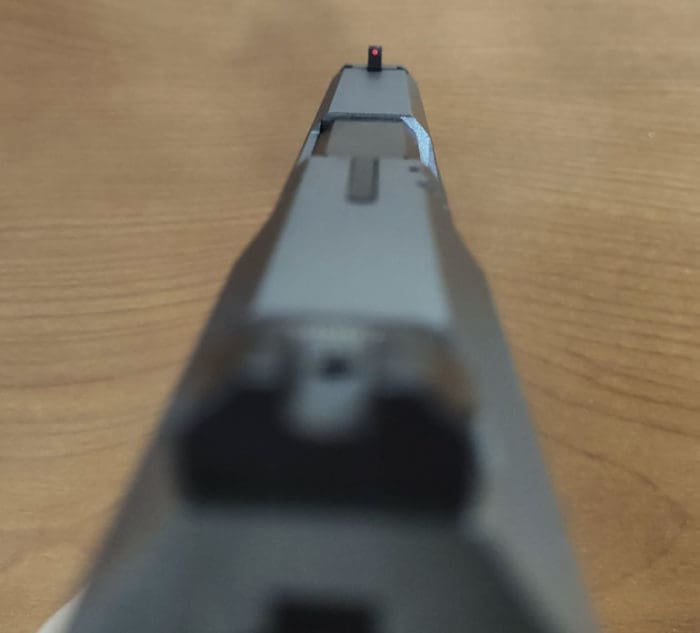Understanding the sight/target relationship is one of the most important and elemental goals of accurate shooting. If you can’t master this relationship, you stand a good chance of failing to hit the target at best, and failing to neutralize a threat at worst.
We use the term sight management to define the relationship between our firearm’s sights and the intended target. The first step in the process: aligning the front sight post within the rear sight notch so there’s equal spacing left and right, and they’re flush against the top.
As we introduce marksmanship theory, we perform various isolated drills. When working with students on sight management I’m surprised how many aren’t looking at their sights.
Many assume that a shooter who isn’t looking at their sights is looking at the target. I’ve found the most likely focal point is someplace in between. I call this concept “ghosting.”
The most common reason students “ghost” is that they’re trying to confirm that their sights are on target. They will quickly look downrange to the target, then back to their sights, repeating the process several times to fire a single round.
It’s a crisis of faith. The shooter must have faith that when they properly align their sights, the front sight post will be positioned on the target and generate a hit. It takes time to build that trust. The bad habits that can develop in the meantime can haunt a student for years to come.
The next common sighting error: focusing on the top of the dot and not the top of the front sight post. While it’s a minuscule difference, the deviation can produce significant errors in shot placement.
To cure this habit, I ask the student to describe their sight picture in as much detail as possible. I ask them how it looks, any blemishes or wear areas they see. Then I ask whether they can see the base of the front sight post.
It’s a trick question; if properly aligned most front sights hide the base from view. If I see them move the their head or muzzle to look, there’s a good chance they were focused on the front sight post.
Once I have them looking at the base, it gives them a good contrast point for the next question. Can they see the top of the front sight post? Their brain starts to process whether they are looking at the top of the sight post or the top of the dot.
If they’re looking at the top of the dot there should be a subtle shift and bam. Now you know they’ve got it!
Lastly, I take a spare magazine and lay it flush against the rear sight, creating a “box.” I’ll ask if they can see the top of the sight post, then have them adjust their sights to see the bottom of the sight post.
This drill helps them to manage their sights quickly and ensure they have the best sight picture for the required accuracy.
The shooter’s brain should guide and confirm correct sight alignment. At some point, the brain will become accustomed to verifying the sights and providing a quick go/no go that ultimately releases the trigger to break the shot.
Easy!
Jeff Gonzales is a former US. Navy SEAL and preeminent Weapons and Tactics instructor. He brings his Naval Special Warfare mindset, operational success and lessons learned to the world at large. Jeff is the Director of Training at The Range at Austin, Click here to register for one of the courses Jeff offers both beginning and advanced shooters.
